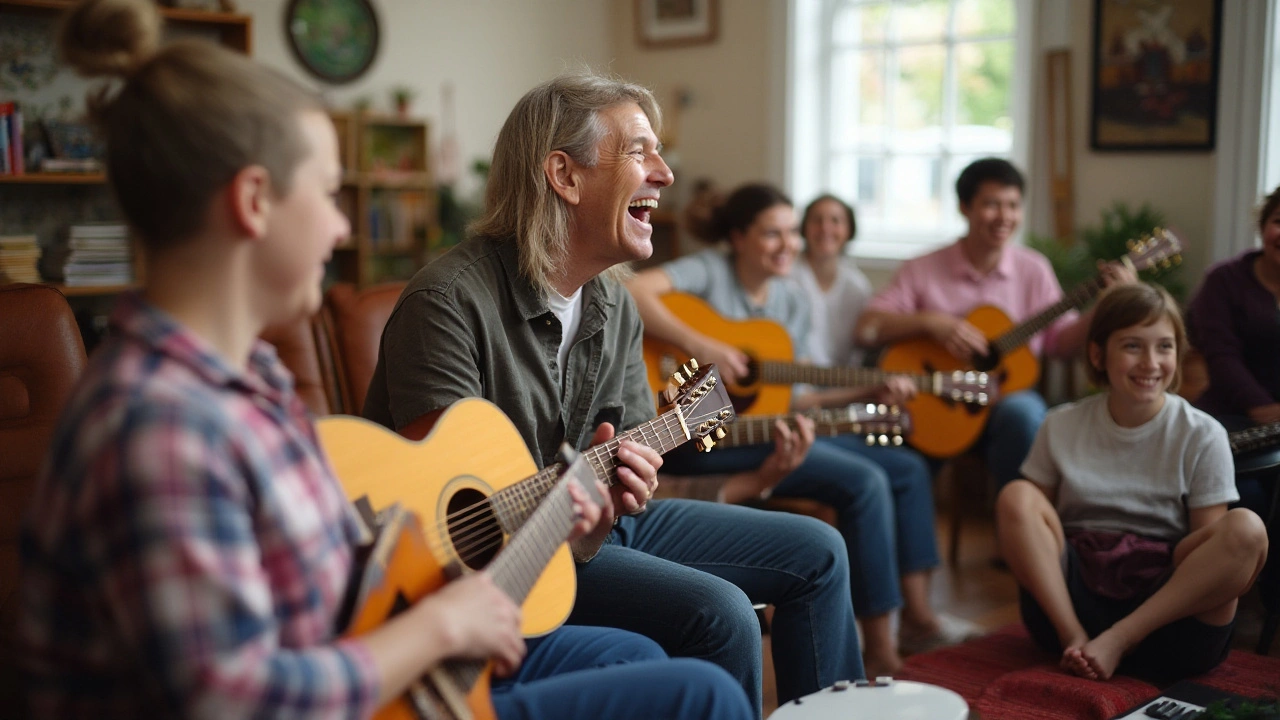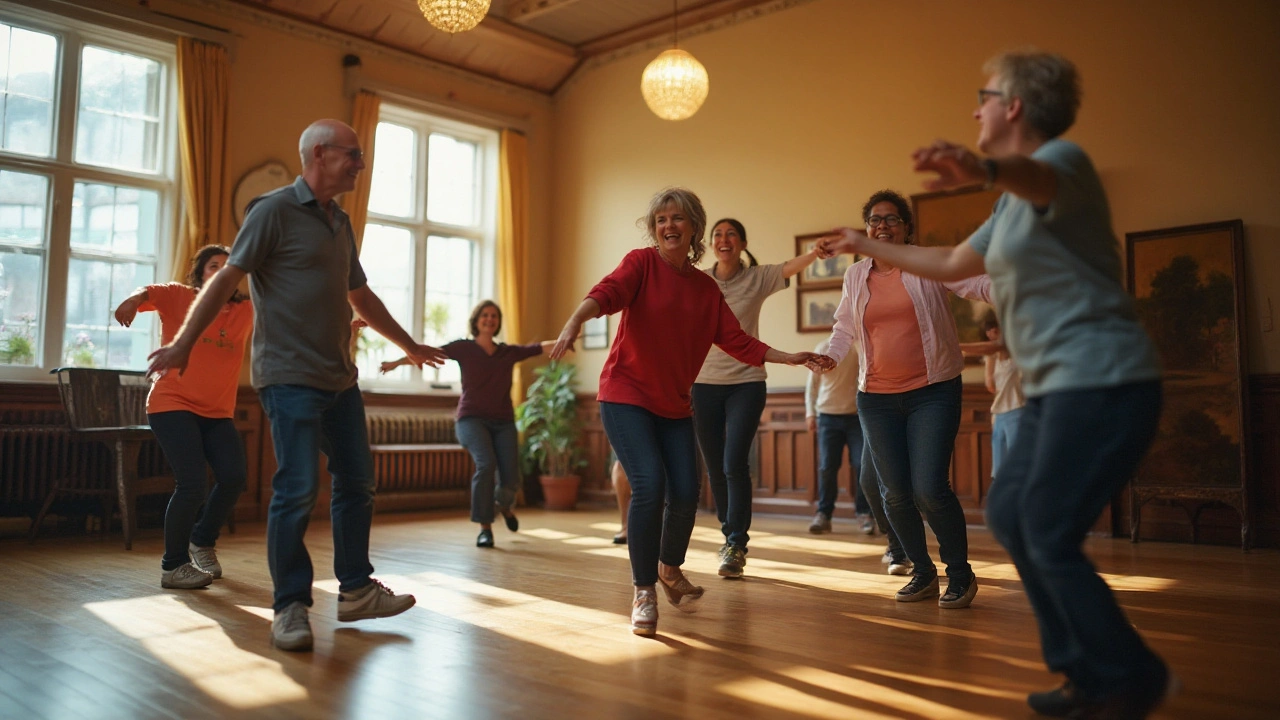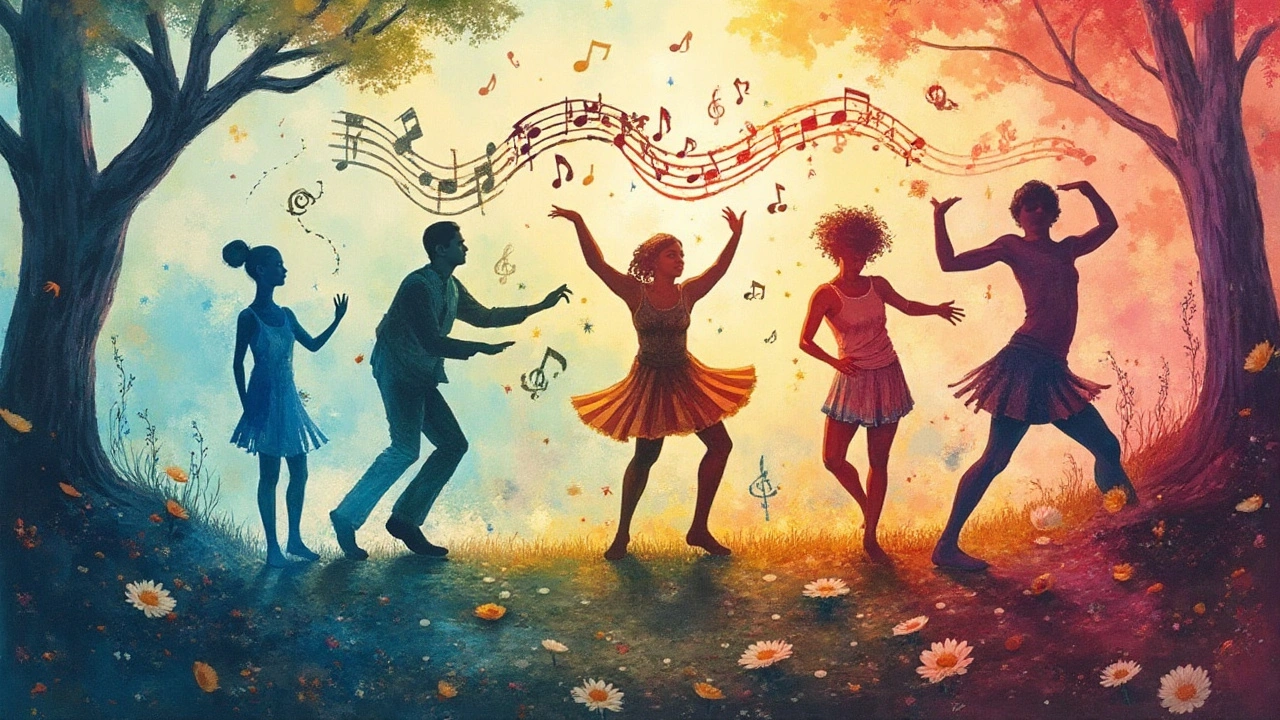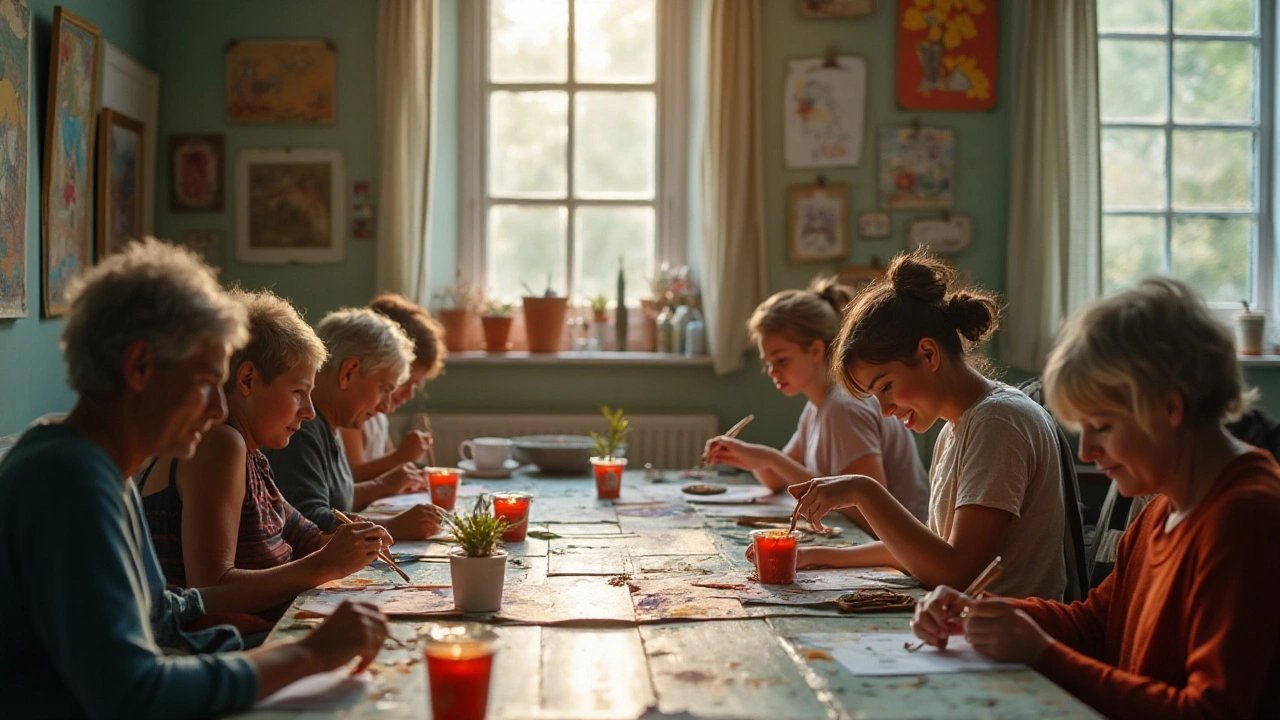Stress has become an unavoidable companion in the hustle and bustle of modern life, affecting individuals across all ages and backgrounds. While traditional methods of stress relief certainly have their place, creative arts therapies present a dynamic and often transformative alternative.
These therapies harness the power of artistic expression to help individuals navigate and manage stress effectively. From vibrant brushstrokes on a canvas to rhythmic dance movements, each creative form offers a unique path to emotional release and well-being.
By engaging in these creative practices, individuals not only find a safe space to express their emotions, but they also uncover new insights and awareness about their inner world. Cultivating creativity can lead to a more balanced and fulfilling life, providing a counterbalance to the stressors that daily challenges can bring.
- Understanding Creative Arts Therapies
- Different Forms of Artistic Expression
- Benefits in Stress Management
- Incorporating Creativity into Daily Life
Understanding Creative Arts Therapies
Creative arts therapies involve the deliberate use of artistic creations and expressions for therapeutic purposes. This kind of therapy spans across different domains such as music, dance, visual art, theater, and literature, each offering a unique channel for emotion and thought exploration. Unlike conventional therapies, which primarily focus on verbal communication, creative arts therapies allow people to express themselves in non-verbal ways. This can be particularly beneficial for individuals who struggle with words or feel overwhelmed by emotions they can't quite articulate. By utilizing various forms of art, this method taps into the innate ability to find solace through creativity, allowing for personal growth and healing.
Each discipline within creative arts therapies offers specific advantages and tools for stress management. For instance, in music therapy, rhythm and melody become vehicles for calming the mind and exploring deep-seated feelings. Art therapy employs colors and shapes to express emotions and often reveals hidden insights through creation. Dance therapy, meanwhile, uses movement to shed stress and awaken a sense of freedom, encouraging a release that words might not capture. Dramatherapy allows for role-play and storytelling, which can provide distance from problems and foster new perspectives. Integrating these practices into therapy sessions doesn't replace traditional methods but complements them, making healing a holistic pursuit.
"Artistic expression is more than a release; it's a dialogue between our consciousness and the world around us," says Dr. Kathryn Lafayette, a leading psychologist in the field of creative therapies.
Statistics highlight the increasing incorporation of creative arts therapies in healthcare settings. A report by the American Art Therapy Association stated that 75% of institutions employing these therapies noted a significant reduction in patient stress and anxiety levels. Another study published in the Journal of Clinical Psychology observed that participants experiencing music therapy sessions reported a 40% decrease in stress-related symptoms. These numbers underscore the growing recognition of creative therapies not just as intervention tools but as vital components of comprehensive mental health strategies.
The creativity-driven approach of these therapies can make them accessible to a wider range of individuals. Whether it's a child struggling with anxiety, a veteran grappling with trauma, or an adult navigating daily stress, creative arts therapy offers tailored interventions that cater to individual needs. By focusing on personal experiences and capabilities, therapy becomes a uniquely adaptive process, deeply resonating with each participant. Practitioners often emphasize this by encouraging clients to engage in art without fear of judgment, valuing the process instead of the final product.

Different Forms of Artistic Expression
When it comes to managing stress through creative approaches, there is no one-size-fits-all. Creative arts therapy encompasses a variety of modalities, each offering its own unique benefits and opportunities for expression. Multiple forms of art are used in therapeutic settings, and individuals often find distinct and personalized ways to address stress via these avenues.
Music Therapy
Music has long been hailed as a universal language, resonating with people on emotional levels that words alone often cannot reach. In music therapy, melodies and rhythms help individuals explore their emotions, often leading to discoveries about their internal landscape. Listening to, composing, or playing music fosters deep relaxation while creating a channel for self-expression. Researchers have found that music therapy significantly reduces levels of cortisol, a hormone linked to stress. A study published in the Journal of Music Therapy observed that participants engaging in music therapy exhibited marked improvements in mood and stress levels after only a few sessions.
Art Therapy
Art therapy invites individuals to express thoughts and feelings that might be difficult to articulate. Through the use of various art media, participants can explore their inner experiences visually. This form of artistic expression can be particularly impactful for those dealing with trauma or intense stress, as creating art provides a safe haven for emotional release. A poignant example comes from a clinical trial involving patients coping with stress-related disorders. Those who engaged in structured art therapy sessions reported feeling more empowered and equipped to manage their stress.
According to Cathy Malchiodi, a notable figure in expressive therapies, "Art makes the invisible visible. It allows a tangible expression of emotions and experiences not easily conveyed through verbal communication."
Dance and Movement Therapy
Through dance and movement therapy, individuals channel their emotional and physical tensions into motion. This form of therapy leverages the psychophysical connection, encouraging participants to explore emotions through their movements. Unlike traditional dance, this therapy focuses on self-expression rather than technical steps, making it accessible to all skill levels. It has been particularly effective in reducing anxiety, improving self-esteem, and fostering resilience. Scientific studies support its benefits; for instance, a research article in the American Journal of Dance Therapy highlights how regular participation can lead to reduced levels of anxiety and depression among participants.
Drama Therapy
Drama therapy provides a different thread in the tapestry of creative therapies. By utilizing storytelling, role-play, and improvisation, participants work through stresses in an imaginative and often liberating manner. Engaging in drama therapy allows individuals to explore different aspects of their personality and confront issues indirectly, decreasing the perceived stress associated with them. It’s not uncommon for participants to gain perspectives on their stressors by re-enacting scenarios, either real or hypothetical. According to a recent survey conducted by the North American Drama Therapy Association, clients reported enhanced self-confidence and reduced stress through role-play exercises, emphasizing the multifaceted value of creativity in tackling stress.
In summary, each form of creative arts therapy provides a unique canvas for managing stress, offering delicious aspects of creativity that appeal to diverse preferences and needs. By tapping into these artistic resources, individuals can foster mental and emotional tranquility, paving the way for enhanced well-being.

Benefits in Stress Management
In today's frenetic world, harnessing creative arts therapy can be an invaluable tool in stress management. Research has shown that these therapies can significantly reduce stress and improve mood, making them a powerful component in maintaining mental health. When people engage in art, music, dance, or drama, they access a part of the brain that is not always easily reached through verbal communication. This can lead to insights that are sometimes difficult to articulate, offering a unique release for pent-up stressors and emotions.
Various studies support the idea that art therapy can reduce symptoms of anxiety and stress. One such study found that just forty-five minutes of creative activity can drastically decrease levels of cortisol, the body's primary stress hormone, regardless of artistic experience or skills. This suggests that creative arts therapies are accessible to everyone, regardless of their initial comfort level with artistic expression. By creating art, individuals can distract themselves from stressful thoughts, allowing their minds to relax, and, in the process, discover a sense of calm that might seem elusive otherwise.
These therapies also empower individuals to shift their focus from stress to creativity. In doing so, they often find a new perspective or solution to problems that had previously felt insurmountable. This creative shift is not simply about the art produced; it's about the process of making it. The act of creating—whether through a gracefully sketched line, a soothing melody, or a frenetic dance—engages the brain's areas responsible for problem-solving and emotion regulation. By processing emotions this way, individuals cultivate a resilience that bolsters their mental health and ability to cope with everyday stressors. Art therapist Gretchen Miller states, "Creating art gives people the ability to reflect on their life, express emotions, and form a sense of identity."
Creative arts therapies offer a non-threatening platform for expression, which can be particularly helpful for those who find verbal communication challenging. For instance, in music therapy, individuals can use instruments or vocalizations to express emotions that words cannot capture. Dance or movement therapy allows for the release of stored tension in the body, helping individuals process stress through physical movement. Each type of creative therapy has unique benefits, catering to different needs and preferences, thus enabling tailored approaches to stress management.
For many, incorporating these therapies into everyday life doesn't require special skills or significant time commitments. Simple practices, such as doodling during a break, playing an instrument after a long day, or moving to a favorite song, can be infused into daily routines. This regular engagement with creativity doesn't merely reduce stress in the moment, but it also builds long-term habits that foster sustained mental health and wellness. The impact of these therapies on stress management is not confined to acute stress relief; they also promote greater emotional intelligence and interpersonal skills, which are critical for a fulfilling and balanced life.

Incorporating Creativity into Daily Life
Incorporating a dash of creativity into daily routines might seem challenging, but with a few thoughtful changes, it can become an organic part of life that aids in stress management. One way to start is by setting aside time each day, as little as ten minutes, dedicated solely to creative arts. This can be as simple as sketching in a notebook or coloring intricate designs—activities known for their calming effects.
Integrating creative arts should be about enjoyment, not perfection. The focus is on the process rather than the final product, allowing for self-expression without the pressure of performance. Engaging in activities like music, plucking the strings of a guitar, or even banging on a drum, creates a rhythmic escape from the stresses of the environment, transforming daily stressors into manageable parts of life.
As children, most people naturally sought refuge in creativity, and reclaiming that youthful wonder can be liberating. Try experimenting with different mediums. If you’re new to the realm of creative arts therapy or unsure where to start, try a workshop. Community centers offer a plethora of workshops where you can dabble in diverse forms of art, from pottery-making to acrylic painting. These workshops not only provide an introduction to art forms but also foster a sense of community and shared purpose, which can be a powerful stress management tool.
A remarkable insight offered by the American Art Therapy Association states, "Engaging in art helps to take your mind off things and is an effective stimulus for mental resilience."
Another effective way to weave creativity into daily life is by journaling. Reflective journaling enriches one’s self-awareness and emotional well-being. Start with a few sentences daily, gradually including sketches or collages made of everyday materials. This process doesn’t only organize thoughts but also transforms emotions into tangible expressions, making journaling invigorating for both the mind and spirit.
Even routine activities can be approached creatively. Consider cooking: experimenting with new recipes or presenting dishes in imaginative ways not only nurtures the body but also engages the mind. In digital age, utilizing smartphone apps designed for art creation can provide a quick source of creative engagement during commutes or breaks, making art accessible anytime and anywhere.
Finally, remember that mental health and wellness are lifelong journeys. By cultivating creativity and weaving creative practices into the fabric of daily routines, a person opens themselves to a reservoir of joy and resilience, well-equipped to face the stress that life inevitably brings. The challenge then becomes finding what forms of creative expressions resonate most deeply with you—and embracing them with an open heart.

